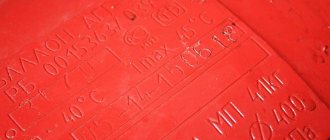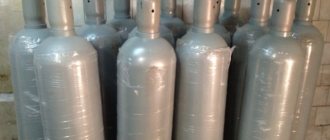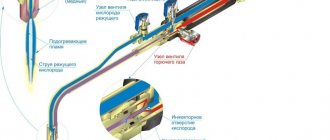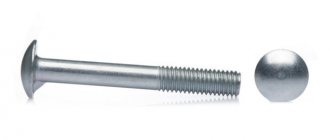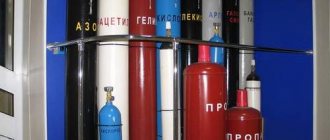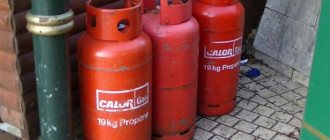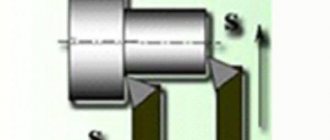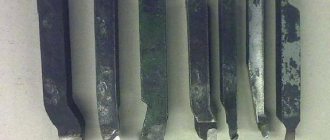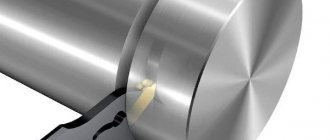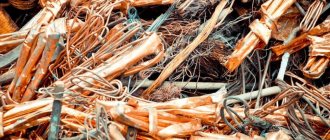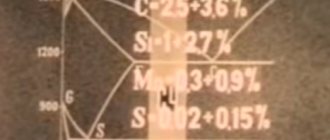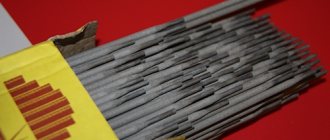Gas cylinder device
For both storage and transportation of compressed and liquefied gas, gas cylinders have been created - special vessels in which these substances are under high pressure. The first type of gas remains in a gaseous state under any pressure, and the second, with an increase in this parameter, passes into the liquid phase.
Nitrogen, fluorine, oxygen, methane, hydrogen, as well as chlorine, carbon dioxide, and ammonia are transported and stored in a compressed and liquefied state.
The container itself is an all-welded structure with walls at least 2 mm thick and cylindrical geometry. It is made of steel or polymer.
Its components:
- shell;
- neck;
- bottom.
The neck of the cylinder has a conical thread for a shut-off valve that hermetically seals the outlet. If, for some reason, the gas expands, the valve will break under the influence of pressure, and the pressure inside the vessel will return to normal.
The gas inside such a vessel is under a pressure of a maximum of 15 MPa. The cylinder body or shell has a single welded seam.
The volume of the cylinder depends on the material from which it is made, the type of filler and purpose. Oxygen cylinders come in both small capacity - from 2 to 10 l, and medium - 20 - 40 l
In order for the gas inside the vessel to exert equal pressure on its walls, each cylinder has a convex bottom - upper and lower. For greater stability, the cylinder is equipped with a ring support - a shoe. In addition, the gas tank is equipped with a metal or plastic cap that protects the valve during operation and transportation.
The cap is screwed onto the neck ring. Sometimes the cylinder is equipped with a reducer designed to balance the pressure. The valve is a unit that includes a steel body in the form of a tee, a flywheel, and a shut-off element.
Each type of gas requires a valve of a special design. For safe operation, it is important that the type of container matches the filler
The assembly consisting of a bypass valve and a rod is called a shut-off element. Each of the assembly parts performs its own function.
The valve is necessary to regulate the gas supply through the body, and the rod is necessary to interact the flywheel with the valve through torque. By turning the flywheel, you can close or open the gas flow.
All 3 parts of the valve are threaded. At the bottom it is needed to attach the part to the cylinder; at the top the valve stem is attached via a threaded connection. A plug is screwed onto the side thread
What are the requirements for the placement of individual cylinder installations?
What are the requirements for the placement of individual cylinder installations?
P. 7.2, 7.4-7.6 PBGH.
P. 9.49, 9.54 SNiP 2.04.08-87 “Gas supply”.
Individual cylinder installations may be installed both outside and inside buildings. When supplying LPG gas with a high butane content, it is necessary to provide for the placement of cylinders, as a rule, inside buildings. Placing cylinders inside buildings with more than two floors is not permitted.
Cylinders placed during the installation of cylinder liquefied gas installations in the building must be located in the same rooms where gas appliances are located. Moreover, as a rule, one cylinder with a capacity of no more than 50 liters is installed in one room.
It is allowed to install two cylinders with a capacity of no more than 27 liters in one room. Each (one of them is a spare).
Cylinders placed indoors must be located at a distance of at least 0.5 m from the gas stove and 1 m from the heating radiator or stove. When installing a screen that protects the cylinders from heating, the distance between the cylinder and the heating device can be reduced to 0.5 m. The distance between the cylinder and the screen must be at least 10 cm. When placing the cylinder against the furnace doors of furnaces, the distance between the cylinder and the combustion door must be be at least 2 m.
Outside buildings, cylinders should be placed in locked cabinets or under lockable covers covering the top of the cylinders and the reducer. Cabinets and casings must have slots or louvres for ventilation.
Cylinders near the walls of buildings must be installed at a distance of at least 0.5 m from the doors and windows of the first floor and 3 m from the windows and doors of the basement and basement floors, as well as sewer wells and cesspools.
It is not allowed to place cylinders near emergency (fire) exits of their premises, on the side of the main facades of buildings, or in passageways with heavy traffic. Cylinders placed on the sunny side must have shade protection or a canopy. Cabinets for cylinders and cylinders under lockable casings must be installed on fireproof foundations that prevent subsidence, with fastening to the foundations or walls of buildings. The height of the base must be at least 0.1 m from the ground level.
Gas supply to LPG units, installations and various burners located in basements and basements is not permitted.
The installation of LPG cylinders in production premises should be provided in places protected from damage by intra-shop transport, metal splashes and exposure to corrosive liquids and gases, as well as from heating above 45° C.
It is allowed to place cylinders directly at the units consuming gas, if this is provided for by the design of the unit.
Each cylinder installation, both with cylinders located in the building and outside it, must have a regulator (reducer) to reduce gas pressure. Pressure regulators installed on cylinders located inside the building should not have a safety relief valve.
Types of gas cylinders
Gas vessels are classified according to many criteria: body material, volume, purpose, name of the filler, connection method. Both metal and composite materials are used to make the case. Both have their pros and cons. You should familiarize yourself with them to make the right choice.
Classification by body material
Alloy or low-carbon steel is used to make the body of a metal cylinder. The capacity of metal vessels is from 5 to 50 liters. Cylinders with a capacity of less than 50 liters are allowed to be installed inside the house, and 50 liters - only outside.
The latter need protection from direct rays of the sun. To do this, they are placed in a locked metal cabinet with markings applied to it corresponding to the type of gas. An empty metal cylinder weighs from 4 to 22 kg.
The vessel is filled with gas to a maximum of 85%. Depending on the volume, from 2 to 22 kg of gas are filled into the cylinder. This gas equipment is explosive and fire hazardous. Temperatures above 50⁰ are contraindicated for him. In case of sudden changes in temperature and in the event of a fire, a powerful explosion occurs. Such a cylinder cannot be turned over sharply, because... this causes an increase in pressure.
The composite gas cylinder is a newer option. Its main advantage is complete explosion safety, even if a gas leak occurs. Liquefied gases are transported and stored in such containers. When exposed to an open flame, the gas escapes through the housing gradually and simply burns.
They are lightweight - 70% lighter than their metal counterparts, and have a stylish design. Thanks to the transparent body, you can always monitor the gas level. In contrast to metal, composite material is not subject to corrosion, therefore, it is more durable.
The polymer has excellent dielectric properties, 100% eliminating sparking. The operating temperature range is between -40 – 50⁰. Cylinders are recommended to be used for up to 30 years. They must be recertified every 10 years. The weight of the cylinder is 8 kg maximum.
The operation of a cylinder made of polymer materials does not harm the environment, because boron is not added to the material
Composite gas cylinders come in two types: those made using blowing technology and those made by winding fiberglass on a mandrel. In the first case, the flask is made of polyethylene terephthalate. Next, manufacturers coat the vessel, made from fiberglass strands, with epoxy resin. The container is placed in a polymer casing.
In the production of cylinders of the second type, a special mandrel is used. Fiberglass is wound onto it, then the workpiece is impregnated with resins. First, two halves of the vessel are obtained. After curing, they are glued together and placed in a dense polyethylene casing.
Due to the presence of an overpressure valve and a fusible rate, composite cylinders have increased safety. In the event of a fire, the fuse link is activated. Melting, it gradually releases gas, with complete control over the process. Once the insert has been activated, the cylinder cannot be used for further use.
Separation according to installation location and purpose
All existing gas cylinders, depending on where they are installed and what they are intended for, are divided into the following types:
- Household . They are used for heating, stoves, boilers.
- Automotive . They are used on cars whose engines run on gaseous fuel.
- Tourist . Suitable for mobile devices such as blowtorches, burners, kebabs, heaters.
- Industrial . This category includes containers in which gases are stored. Such cylinders are used in metallurgy, the chemical industry, and pharmaceutical plants.
- Medical . They are filled with breathing mixtures and carried in ambulances, used in hospital wards for intensive care and where oxygen cocktails are prepared. Such cylinders are also used by rescuers and firefighters.
There are also universal cylinders that are used in many industries. For mobile gas appliances, disposable cartridges are produced that hold 100 - 450 g of gas. Visually they resemble aerosol sprays.
Features of classification by filler
Based on the composition of the mixture, cylinders are called propane, butane, hydrogen, nitrogen, acetylene, carbon dioxide, argon, oxygen, helium, etc. Each composition has its own temperature regime.
For standard conditions, the difference between them is small. When a cylinder is needed for use in high mountain areas or in very low temperature conditions, this parameter plays a decisive role.
Butane isomer is a mixture of isobutane and propane, well suited for low temperatures. It is safe for the ozone layer. Both propane and butane are very dangerous for humans. If they are inhaled, serious consequences for the body are inevitable. Direct contact with liquid butane causes the body to cool down to -20⁰.
Butane is used to charge lighters and is sometimes used as a refrigerant in air conditioners and refrigeration units. Propane is necessary in the production of solvents. Metal work involving welding and cutting requires acetylene. It is also used in the production of explosives, acetic acid, rubber, all kinds of plastics, and for rocket engines.
Nitrogen is used by the electronics industry, chemical, oil and gas, pharmaceuticals, and metallurgy. Hydrogen is needed by the food and chemical industries. It is also used as fuel for rockets and for welding.
Bicycle wheels and fire extinguishers are pumped with carbon monoxide or carbon dioxide. In the food industry, carbonated drinks are produced using it. In the form of dry ice, carbon monoxide is used as a refrigerant.
Carbon dioxide cylinders are present in catering establishments where they cool drinks to a given temperature, make soda and sell it on tap.
In the metallurgical and metalworking industries, in processes where interaction of the molten flow with oxygen is unacceptable, argon is used. It is also used in medicine for anesthesia, and it is used to purify the air. Helium cylinders are necessary not only for filling balloons, but also for cutting, welding, and melting metal.
This gas is part of the breathing mixtures used in diving; it can be a coolant in scientific experiments. Ammonia is a strong solvent. Since it is very poisonous, cylinders with it must be transported and stored very carefully. The same applies to containers with chlorine.
Oxygen containers can be found near welding machines, where explosives and acids are produced, and where oxygen cocktails are prepared. Compressed air, transported in cylinders, is most often used in the operation of pneumatic devices.
Liquefied natural gas methane is used as a sleeping pill in medicine, for the production of fertilizers, and in the form of fuel. This gas is safe for humans.
Types of cylinders by connection method
Different models of gas cylinders are connected to devices using four connection standards. The most popular is the threaded standard, which meets all safety requirements. The products have a 7/16″ thread. A hose or burner is attached to such cylinders by screwing it on.
The next cylinder standard is collet . This type of connection is also called push or clamp. A cylinder with this type of connection is considered the cheapest. Here, the role of a clamp when connecting is performed by a cylindrical part. The collet cylinder can be connected to threaded equipment, but this will require an adapter.
The pierced type of cylinders is the most common all over the world. These disposable cylinders have the disadvantage that the container cannot be removed until all the gas has been used. The latest models of pierced cylinders with the SGS system do not have this drawback.
Here it is possible to block gas leakage when disconnecting from the burner and turn off a container that is not completely emptied. They are used for soldering lamps, lighting lamps, and portable stoves.
Most often, gas burners are designed for threads, but if you have a collet cylinder, you can use it by purchasing an inexpensive adapter
Valve connection is the type that is used mainly in Europe. The connection is simple and reliable with a high degree of leakage protection.
At home
The rules for the use of gas cylinders, as well as their manufacture and storage, are set out in several official documents:
- “Industrial safety rules for hazardous industries where equipment under excess pressure is used,” approved by Order No. 116 of March 25. 2014 Federal Service of Rostekhnadzor.
- PPR in the Russian Federation.
- GOST 15860-84, establishing technical. conditions for cylinders with liquefied hydrocarbons with pressure up to 1.6 MPa.
The recommendations of the Federal State Institution VNIIPO dated June 13, 2000 on the tactics of fire departments in conditions of the possibility of an explosion of gas-cylinder equipment at the source of a fire provide the following information:
- Cylinders for storing and transporting liquefied/compressed hydrocarbon gases (LPG) have become widespread in various areas of industry, as well as in everyday life.
- In accordance with GOST 15860, 25 enterprises in Russia produce welded steel cylinders for storing LPG.
- Their total number is about 40 million pieces.
- The main types have a capacity of 27.50 liters, which is up to 85% of the total.
Storage and use of gas cylinders
Considering that, according to GOST, the permissible service life of cylinders subject to compliance with the rules, technical inspection once every five years is 40 years, it is easy to imagine that in recent years their number has increased both in everyday life for cooking, on construction sites, in the workshops of industrial enterprises for fire , including gas welding work, has only increased; as well as the number of fires, where explosions took place, and loss of life.
Basic requirements of industrial safety standards for the use of cylinders with propane, butane, and their mixture when used in everyday life:
- It is prohibited to store LPG cylinders in private houses, apartments, stairwells, basements/attics, and on loggias/balconies of multi-story residential buildings.
- Kitchen stoves and gas units for heating water are required to have an LPG supply from tanks installed outside residential buildings in extensions/cabinets made of non-combustible material, located near blank external walls, at least 5 m from the entrances to the house, basements/basements. An exception is 1 tank up to 5 liters connected to the stove.
- Cabinets for containers with LPG must be locked, equipped with blinds for constant ventilation, and provided with the following inscriptions: “Flammable. Gas".
- At the entrances to private houses, townhouses, block sections, premises of buildings where LPG tanks are used, an inscription/plate is placed: “Flammable. Gas cylinders."
The simplest precautions are also mentioned - it is forbidden to use household appliances if there is a gas leak that has a characteristic odor; Under no circumstances should you check the tightness of any connections in the gas path from the entrance to the apartment to the devices using an open flame. At home, you can check for gas leaks with a soap solution, but it is better not to do it on your own; and shut off the supply and, depending on the situation, call representatives of the emergency gas service or service organization/enterprise
At home, you can check for gas leaks with a soap solution, but it is better not to do it on your own; and shut off the supply and, depending on the situation, call representatives of the emergency gas service or service organization/enterprise.
Rules for storing gas cylinders
Explanation of cylinder markings
By reading the label correctly, you can get complete information about the gas cylinder. If it is a propane cylinder, then its passport is in the valve area, on a metal mug.
The passport of the propane cylinder indicates: operating pressure in MPa, test pressure in the same units, actual volume of the container in l, serial number, date of manufacture in the form “MM.YY.AA”, where the first characters indicate the month, the second - the year , third - the year of the upcoming certification.
This is followed by the weight of the empty cylinder in kg, and the mass of the filled cylinder. The last line is the letter designation “R-AA”. “R” is the mark of the recertification site or plant. The combination of characters “AA” reveals information about the year until which this certification will be valid.
A decision about the suitability of a cylinder should be made only after a complete decoding of all data about it. If defects are found on it, it is emptied and sent for repair.
The oxygen cylinder marking has its own order and consists of four lines. The first contains information about the manufacturer, as well as the container number. The second contains the release date and recommended testing date. In the third - hydraulic and working pressure. In the fourth - the volume of gas and the mass of the cylinder without valve and cap.
When buying a cylinder, you should pay attention to how the information is printed on it. It is not applied to the body with paint, but is knocked out and then coated with a special colorless varnish to protect it from corrosion. Often the last line contains the manufacturer's mark.
What volume should I choose?
Gas cylinders come in different sizes. For outdoor storage, 50-liter ones are preferable, and for indoor storage, 5-liter ones.
“Currently, filling cylinders is a rather complicated operation for consumers, since cylinders cannot be filled at automobile gas filling stations in accordance with fire safety requirements, and gas filling stations are located outside populated areas. Therefore, for a dacha, if installed outdoors, it is better to purchase a cylinder of maximum volume in order to fill it 1-2 times during the summer season. If it is a cylinder made of steel, then it is worth taking a volume of 50 liters, if it is made of composite material, then 36 liters. Cylinders with a capacity of 47 liters are sold upon pre-order. Such cylinders are installed only outdoors in a metal cabinet. You can only place cylinders with a volume of 5 liters in the room, which are designed to be connected to a gas stove,” says Roza Gordeeva.
Features of painting gas cylinders
Compressed gas cylinders are painted differently in Russia and abroad. Moreover, each type of gas corresponds not only to a specific color of the body, but also to the color of the stripe and inscription.
The table shows the identification colors of cylinders with certain types of gases, as well as the color of the inscriptions and stripes.
| Gas | Color of the cylinder | Inscription | Band |
| Ammonia | Yellow | Black | Brown |
| Nitrogen | Black | Yellow | Brown |
| Argon is technical and pure | Black, gray respectively | Blue; green | Blue; green |
| Acetylene | White | Red | Green |
| Butylene | Red | Yellow | Black |
| Butane | Red | White | Black |
| Hydrogen | Dark green | Red | Black |
| Compressed air | Black | White | Black |
| Helium | Brown | White | Black |
| Oxygen | Blue | Black | Black |
| Hydrogen sulfide | White | Red | Red |
| Carbon dioxide | Black | Yellow | Yellow |
Nitrous oxide is pumped into a gray cylinder with a black lettering and the same stripe. A protective-colored phosgene cylinder has a yellow inscription and a yellow stripe, and a cylinder of the same color, but with a black inscription and a green stripe, contains chlorine. The aluminum color of the cylinder, the black inscription on it and two yellow stripes indicate that it is filled with freon-22.
For sulfur dioxide, a black cylinder with a white stripe and a yellow inscription is intended. Ethylene is contained in a purple container with red lettering and a green stripe. For other flammable gases, red vessels with a white inscription and a green stripe are intended. Non-flammable gases are indicated by a yellow inscription on a black background of the housing and a green stripe.
Types of cylinder malfunctions and their elimination
All existing malfunctions in gas cylinders are divided into two types: those that can be eliminated and those that cannot be eliminated.
The first type includes:
- incorrect operation of the cylinder valve and pressure gauge;
- shoe damage or displacement;
- damage to the threaded connection;
- gas leak;
- The body paint is peeling off in many places.
The second type of malfunction is a significantly damaged surface of the case in the form of dents, cracks, swelling, and lack of markings. In this case, the cylinder is rejected. The decision on the possibility or impossibility of repair is made by a specialist with appropriate qualifications.
When repairing gas cylinders, defective elements are often simply replaced. Sometimes it is necessary to flush the inside of the container and check for corrosion from the inside. Periodic inspection includes all this work, and upon completion a certificate is issued.
The gas cylinder in the photo is subject to repair. It needs to be painted and the valve replaced. You can do the first job yourself, but the second should be entrusted to a specialist.
This should not be done at home. All you can do yourself is paint the body of the cylinder. This must be done extremely carefully so as not to paint over the inscriptions or damage the markings. All other faults can only be repaired by a specialized workshop or manufacturer.
Guarantee
Gas cylinders have a warranty period of 1-2 years from the date of sale, depending on the body material. The service life of the tank is up to 30 years.
Conditions for the manufacturer to fulfill warranty obligations:
- having a passport;
- safety of factory markings and serial number on the device;
- strict adherence to the instructions for transportation, storage, installation, operation and maintenance of the device, as well as the user manual;
- availability of a warranty card filled out by the seller;
- For some manufacturers, a mandatory condition is registration of the warranty on the official website of the plant;
- no traces of attempted self-repair or re-sticking of the markings.
The manufacturer undertakes to fulfill warranty obligations.
These include:
- testing;
- free repair;
- replacement with equipment of similar technical characteristics of proper quality;
- financial compensation.
The warranty does not apply to the casing of a composite cylinder, as well as to containers with the following external defects that arose during transportation and operation by the consumer:
- mechanical damage to the cylinder from contact with a sharp object or resulting from a fall or impact - scratches, gouges, dents, deformation, cracks, abrasions that caused a decrease in the thickness of the cylinder wall;
- darkening of the valve color or appearance of inclusions on its body.
When a warranty case occurs, a list of documents is drawn up and sent to the manufacturer.
Popular gas cylinder manufacturers
“Sledopyt” should be highlighted . They offer two types of gas cylinders with threaded and collet connections - for all-season mixture and winter. The American company Jetboil supplies the market with cartridges filled with propane and isobutane, which can be used in winter.
Mobile gas cylinders are produced by the South Korean brand Tramp. They are filled with all-season gas. Connection - threaded and collet
The French company Campingaz produces all kinds of devices equipped with gas cylinders. Their connection type is collet, valve or pierced. Primus produces several types of gas cartridges. All connections are threaded.
Good quality composite vessels are supplied by the Czech brand Research . The package includes special valves that protect the container from overfilling. All these cylinders are explosion-proof.
